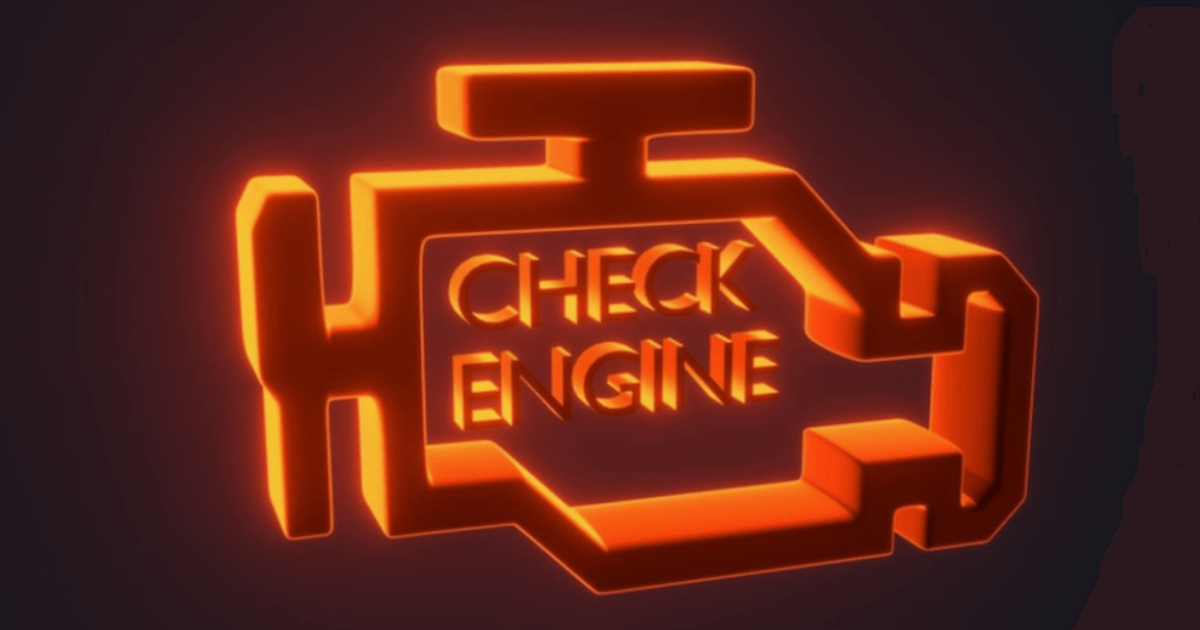Flashing Check Engine Light in Chevy, Ford, Honda & More
A flashing check engine light can mean different things depending on the vehicle make and model. While the general meaning remains the same a serious engine misfire or critical issue—some brands have specific triggers and troubleshooting methods. In this guide, we’ll break down what a flashing check engine light means in Chevy, Ford, Honda, Toyota, Subaru, Jeep, GMC, and Nissan along with how to diagnose and fix the issue.
What Does a Flashing Check Engine Light Mean Across All Brands?
A flashing check engine light typically means:
- Severe engine misfire
- Fuel system issues
- Ignition failure
- Catalytic converter damage risk
- Sensor malfunctions affecting engine performance
Action: If your check engine light is flashing, pull over and stop driving to avoid major engine damage.
Flashing Check Engine Light: Brand-Specific Troubleshooting
Chevy (Silverado, Tahoe, Cruze, Malibu, Equinox, Traverse)
- Failing spark plugs or ignition coils (common in Silverado and Tahoe)
- Service Stabilitrak warning + check engine light in Equinox and Traverse
- Carbon buildup in intake valves (Malibu, Cruze)
🔧 Fix:
- Replace spark plugs every 60,000 miles.
- Clean intake valves if carbon buildup is suspected.
- Reset the Stabilitrak system if it appears with a flashing check engine light.
Ford (F-150, Explorer, Escape, Focus, Mustang)
- Cylinder misfire due to weak ignition coils (F-150, Explorer)
- Turbocharger misfire issues in EcoBoost models (Escape, Mustang)
- Failing camshaft position sensor (Focus, Escape)
🔧 Fix:
- Test ignition coils and replace any failing ones.
- Check for turbo-related misfire codes using an OBD-II scanner.
- Inspect and replace the camshaft position sensor if needed.
Honda (Accord, Civic, CR-V, Odyssey, Pilot, Ridgeline)
- Flashing check engine light + shaking (frequent in older Civics and Accords)
- Failed fuel injectors (CR-V, Pilot, Ridgeline models after 2016)
- Faulty ignition coils (Odyssey, Pilot)
🔧 Fix:
- Replace spark plugs every 30,000–50,000 miles.
- Inspect ignition coils especially if the vehicle is over 100,000 miles.
- Clean fuel injectors or replace them if the misfire is fuel-related.
Toyota (Camry, Corolla, RAV4, Highlander, Tundra, Tacoma)
- Faulty mass airflow (MAF) sensor (Camry, Corolla)
- Weak ignition coil failure in Tacoma and Tundra V6 models
- Failing VVT solenoid causing misfires (RAV4, Highlander)
🔧 Fix:
- Clean the MAF sensor with MAF cleaner spray.
- Replace ignition coils if a misfire is detected in Cylinder 1, 3, or 5 (common in Tundra/Tacoma).
- Inspect and clean the VVT solenoid and oil passages if sluggish acceleration accompanies the flashing check engine light.
Subaru (Outback, Forester, Impreza, WRX, Crosstrek, Legacy)
- Check engine light + flashing cruise control (common Subaru issue)
- Failing knock sensor (WRX, Legacy)
- Oil contamination in ignition coils (Forester, Outback)
🔧 Fix:
- If the check engine light and cruise control light flash together, an OBD-II scan is necessary to find the misfire cause.
- Replace the knock sensor if P0325 code appears.
- Inspect ignition coils and ensure there are no oil leaks affecting them.
Jeep (Wrangler, Grand Cherokee, Cherokee, Gladiator, Compass)
- Failing camshaft/crankshaft position sensors (Wrangler, Grand Cherokee)
- Misfires due to bad ignition coils (Cherokee, Compass)
- Carbon buildup on intake valves (Grand Cherokee V6)
🔧 Fix:
- Replace the camshaft position sensor if your Jeep is throwing P0340 or P0345 codes.
- Swap out ignition coils if over 80,000 miles.
- Clean intake valves with walnut blasting or fuel injector cleaner.
GMC (Sierra, Yukon, Terrain, Acadia, Canyon)
- Flashing check engine light + reduced engine power warning (common in Sierra, Yukon)
- Catalytic converter overheating (Acadia, Terrain)
- Failing throttle body (Yukon, Sierra)
🔧 Fix:
- If you see the reduced engine power warning, check for throttle body issues.
- Inspect the catalytic converter for overheating signs.
- Run a diagnostic scan for misfire codes (P0300–P0306) and replace ignition components if necessary.
Nissan (Altima, Maxima, Rogue, Pathfinder, Frontier, Titan)
- Failing ignition coils (Altima, Maxima)
- Weak catalytic converters (Rogue, Pathfinder)
- Camshaft sensor failure (Frontier, Titan)
🔧 Fix:
- If the check engine light flashes during acceleration, check ignition coils first.
- Inspect and replace a failing catalytic converter (common in 2013–2018 models).
- Replace the camshaft position sensor if engine hesitation occurs.
How to Fix a Flashing Check Engine Light in Any Vehicle
✅ Step 1: Scan for Trouble Codes
- Use an OBD-II scanner to check for error codes.
✅ Step 2: Check Spark Plugs & Ignition System
- Replace any old or fouled spark plugs.
- Test ignition coils and replace any weak ones.
✅ Step 3: Inspect Fuel System
- Clean or replace dirty fuel injectors.
- Check the fuel pump pressure.
✅ Step 4: Test Sensors
- MAF, O2, knock, and camshaft sensors should be checked and cleaned/replaced.
✅ Step 5: Inspect Catalytic Converter & Timing Components
- Look for overheating signs in the catalytic converter.
- If the engine is running rough, check the timing system.
Conclusion
A flashing check engine light means immediate attention is required but troubleshooting varies by vehicle brand. Whether it’s a misfire, ignition issue, or sensor failure knowing your car’s specific weak points can help you fix the issue faster. Always diagnose with an OBD-II scanner and repair critical components before driving again.





